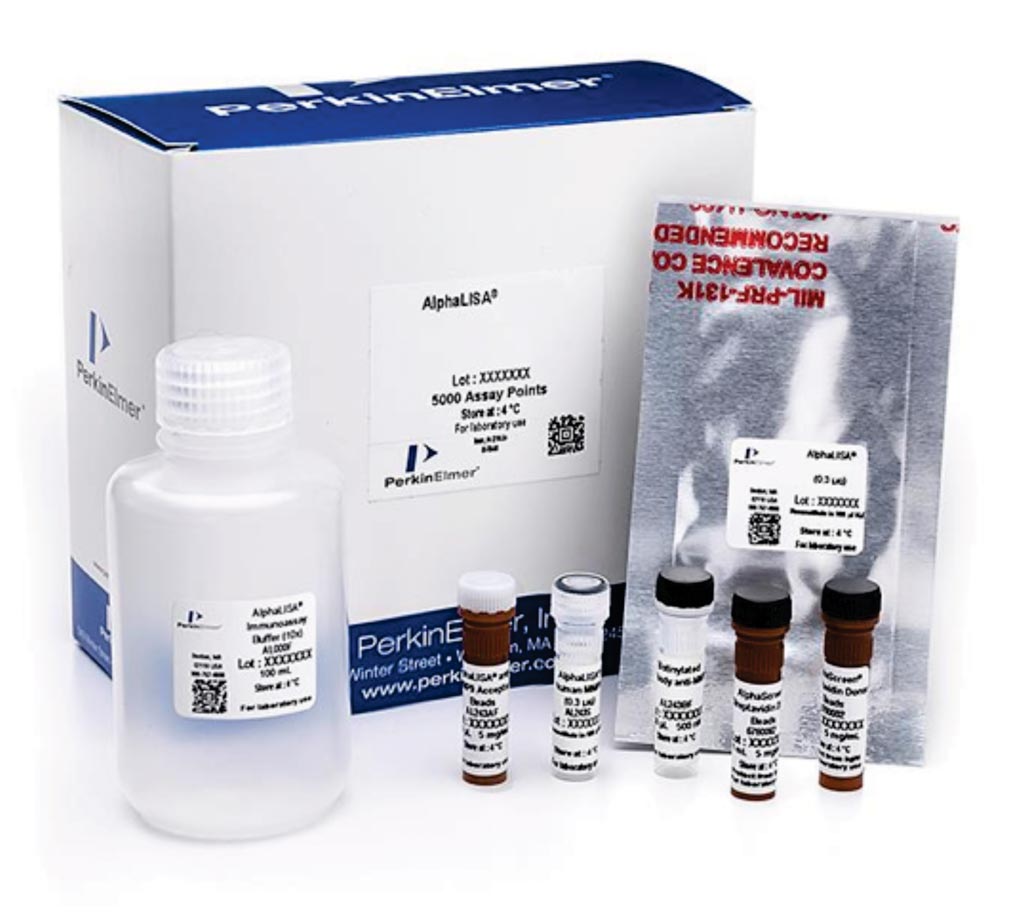Biomarkers Linked to Fatigue in Parkinson’s Disease
By LabMedica International staff writers
Posted on 21 Aug 2018
Parkinson's disease (PD) is a long-term degenerative disorder of the central nervous system that mainly affects the motor system. The symptoms generally come on slowly over time. Early in the disease, the most obvious are shaking, rigidity, slowness of movement, and difficulty with walking.Posted on 21 Aug 2018
The cause of Parkinson's disease is generally unknown, but believed to involve both genetic and environmental factors. There is no cure for Parkinson's disease, with treatment directed at improving symptoms. Parkinson's disease (PD) ‐related fatigue is a significant clinical problem, and the pathological processes that cause fatigue remain unknown.

Image: Vascular cell adhesion protein 1 (VCAM‐1) enzyme-linked immunosorbent assay kit (Photo courtesy of PerkinElmer).
An international team of scientists led by Rice University staff (Houston, TX, USA) included in a study 47 drug naïve, newly diagnosed PD patients with low (≤3.0) or high (>5.5) fatigue levels as evaluated by the Fatigue Severity Scale (FSS). Strict diagnostic criteria were applied for inclusion. Patients with possible confounding causes for fatigue were excluded.
Serum concentrations of a panel of inflammatory markers including interleukin-8 (IL‐8), IL‐6, IL‐6R, IL1‐Ra, Tumor necrosis factor alpha (TNF‐α), tumor necrosis factor receptor 1 (TNFR1) Monocyte chemoattractant protein 1, (MCP1), macrophage inflammatory protein (MIP‐1β), p‐selectin, E‐selectin‐1, Intercellular Adhesion Molecule 1 (ICAM), Vascular Cell Adhesion Protein 1 (VCAM‐1), and Chemokine (C-C motif) ligand 5 (CCL5), measured using enzyme-linked immunosorbent assay (ELISA) technology in PD patients with and without fatigue to assess the potential relationships of fatigue in newly diagnosed, treatment‐naïve patients.
The scientists reported that fatigued PD patients had significantly higher levels of the IL‐1 receptor antagonist (IL1‐Ra) (1,790 pg/mL ± 1,007) versus 1,262 pg/mL ± 379) and of the adhesion molecule VCAM 1 (1,071 ng/mL ± 276 versus 895 ng/mL ± 229) than non‐fatigued patients. The authors concluded that higher serum levels of the inflammatory molecules IL1‐Ra and VCAM‐1 were associated with higher fatigue levels in patients with newly diagnosed, drug‐naïve PD. These findings highlight an altered immune response as a potential contributor to PD‐related fatigue, from the earliest clinical stages of the disease. The study was published online on June 26, 2018, in the journal Acta Neurologica Scandinavica.
Related Links:
Rice University













